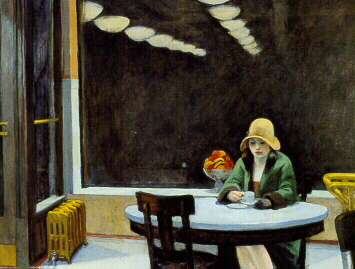Midmorning and the raccoon is among the plant saucers that serve as water containers for birds. In fact, it stands in one and looks about vacantly. Then it is obvious: the tell-tale limp, and the horrible nasal discharge: rabies or distemper. The raccoon was standing in the water because of fever. Whether distemper or rabies, it is not agitated but it is clearly in its last stages.
A phone call to the wildlife office and they suggest trapping the raccoon under a bin until they arrive. By then the raccoon painfully but with surprising speed left the front of the house and went to the woods east. He found a comfortable spot into which to borrow, under leaves and a canopy of pine needles, and there he lay. I hover nearby, first standing, then sitting on the bin I had dutifully brought. The paralysis of either rabies or distemper eventually spreads up the spine to the brain; perhaps the creature was not going to move again.
In the makeshift burrow, still visible to me when I stand over it, the raccoon wheezes and hacks and shifts restlessly, raising its little head occasionally, then is quiet for a long time, its little back barely lifting with each labored breath. I must have sat an hour, as if in vigil, with many reflections on life and suffering and innocence and futility. I was sure the raccoon was dying. And still the wildlife people don’t show up.
Then, in a burst of energy, the raccoon limps out of the burrow. It wants to go back to the water and heads west. Dutifully, the bin goes over, and a couple of bricks hold it down. The air holes are adequate. It’s over, I guess.
I go inside, guiltily. Half an hour passes, and still no wildlife staff. Going outside to check, the bin seems quiet. Perhaps the raccoon has died or is sleeping. But next to the bin is a hole, the dirt scattered. A flip of the bin and it’s clear: the raccoon has escaped! He had summoned enough energy to elude the supposed sympathies of a human being.
I will probably never see the raccoon again. It did not return to the same burrow. Nor will it trust a human again for the rest of its short life. Rabies transmits to other mammals only if bitten, but distemper is more ravaging, and may affect all the raccoons in the colony. I recalled the Features photos from a year before, the Thatch entries about the antics of the raccoons climbing to the roof, their eagerness for sunflower seeds and their contentment in the front yard.
I called the wildlife staff and told them what had happened. But now I was glad they had not shown up. What would have been the creature’s fate? Trapped, caged, flung about like so much dross, a long and frightening truck ride, far from familiar habitat, then a cold antiseptic metallic lab with a single overhanging bright light: what a way to die! This creature deserved to be free, to be undisturbed, to navigate the bardo in its own way. Is that not what we all should want for ourselves, for all sentient beings?

